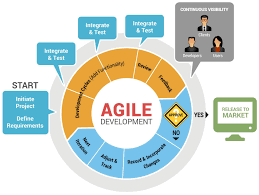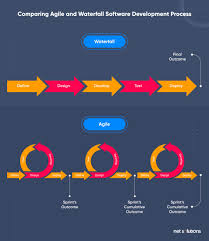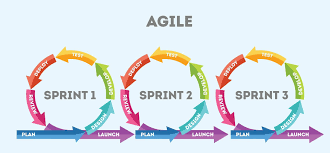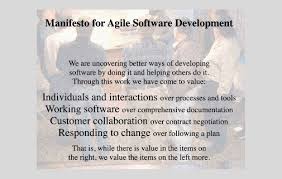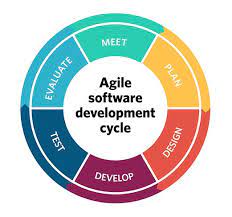Unlocking Efficiency with RAD: Rapid Application Development at Its Best
The Power of Rapid Application Development (RAD)
Rapid Application Development (RAD) is a software development methodology that prioritizes speed and flexibility in the creation of applications. Unlike traditional methods that follow a linear approach, RAD emphasizes iterative development and quick prototyping to deliver functional software in a shorter timeframe.
Key Principles of RAD:
- Iterative Development: RAD breaks the development process into smaller iterations, allowing for continuous feedback and improvement.
- Prototyping: Prototypes are quickly developed and refined based on user feedback, enabling stakeholders to visualize the final product early in the process.
- Collaboration: RAD encourages close collaboration between developers, users, and stakeholders to ensure that the application meets all requirements.
- Flexibility: Changes can be easily accommodated throughout the development cycle, promoting adaptability to evolving needs.
- Rapid Delivery: By focusing on speed and efficiency, RAD aims to deliver working software within a compressed timeline.
The Benefits of RAD:
RAD offers several advantages for organizations looking to streamline their development processes:
- Quicker Time-to-Market: Rapid prototyping and iterative development reduce time spent on planning and design phases, accelerating product delivery.
- Better User Involvement: Early and frequent user feedback ensures that the final product aligns with user expectations and needs.
- Cost-Efficiency: The iterative nature of RAD minimizes rework and allows for changes to be implemented early in the process, reducing overall project costs.
- Faster Adaptation to Changes: RAD’s flexibility enables teams to respond quickly to changing requirements or market conditions without derailing the entire project.
Challenges of RAD Implementation:
While RAD offers numerous benefits, its implementation may pose challenges for some organizations:
- User Availability: Active user involvement is crucial in RAD projects, requiring dedicated time and resources from stakeholders.
- Risk Management: Rapid iterations can lead to potential oversights or quality issues if not managed effectively.
- Skill Requirements: RAD demands skilled professionals who are adept at rapid prototyping, collaboration, and quick decision-making.
8 Essential Tips for Effective Rapid Application Development
- 1. Focus on quick iterations to deliver functional software rapidly.
- 2. Involve stakeholders early and frequently for feedback and validation.
- 3. Prioritize simplicity in design and functionality to speed up development.
- 4. Reuse existing components and libraries to accelerate the development process.
- 5. Emphasize collaboration among team members to enhance productivity and innovation.
- 6. Conduct regular testing to ensure quality while maintaining a fast pace of development.
- 7. Be prepared for changes and adapt quickly to evolving requirements during the development cycle.
- 8. Use RAD tools and frameworks that support rapid prototyping and development.
1. Focus on quick iterations to deliver functional software rapidly.
In rapid application development (RAD), focusing on quick iterations is key to delivering functional software rapidly. By breaking down the development process into smaller, manageable iterations, teams can continuously build and refine the application based on feedback, allowing for rapid progress and timely delivery of working software. This iterative approach not only accelerates the development timeline but also ensures that the final product meets user requirements effectively through constant evaluation and improvement.
2. Involve stakeholders early and frequently for feedback and validation.
In RAD (Rapid Application Development), involving stakeholders early and frequently for feedback and validation is a critical tip to ensure the success of the project. By engaging stakeholders from the outset, developers can gain valuable insights into user requirements and expectations, allowing for quick adjustments and refinements throughout the development process. This iterative approach not only fosters collaboration and transparency but also helps in delivering a final product that aligns closely with stakeholder needs and business objectives.
3. Prioritize simplicity in design and functionality to speed up development.
To accelerate development in RAD (Rapid Application Development), it is essential to prioritize simplicity in both design and functionality. By keeping the design straightforward and focusing on essential features, developers can streamline the development process and deliver functional software more quickly. Simplifying the design not only speeds up development but also enhances usability, making the application more intuitive for end-users. Embracing simplicity in both design and functionality is a key strategy to optimize efficiency and achieve rapid results in RAD projects.
4. Reuse existing components and libraries to accelerate the development process.
To accelerate the development process in RAD (Rapid Application Development), a valuable tip is to leverage existing components and libraries for reuse. By utilizing pre-built components and libraries, developers can save time and effort in creating functionalities from scratch. This approach not only speeds up development but also ensures consistency and reliability across the application. Reusing existing resources promotes efficiency, enhances productivity, and allows teams to focus on customizing solutions to meet specific requirements, ultimately leading to faster delivery of high-quality software products.
5. Emphasize collaboration among team members to enhance productivity and innovation.
In RAD (Rapid Application Development), emphasizing collaboration among team members is a key tip to enhance productivity and foster innovation. By promoting open communication and teamwork, team members can leverage their diverse skills and perspectives to solve challenges more effectively and generate innovative ideas. Collaborative efforts not only streamline the development process but also create a conducive environment for creativity and continuous improvement, ultimately leading to the successful delivery of high-quality applications in a shorter timeframe.
6. Conduct regular testing to ensure quality while maintaining a fast pace of development.
To ensure the quality of your rapid application development process, it is essential to conduct regular testing while maintaining a fast pace of development. By incorporating testing at every stage of the development cycle, you can identify and address potential issues early on, preventing costly rework later. This proactive approach not only helps maintain a high level of quality but also ensures that your application meets user expectations and performs reliably. Prioritizing testing in tandem with rapid development allows for efficient problem-solving and continuous improvement, resulting in a robust and successful application.
7. Be prepared for changes and adapt quickly to evolving requirements during the development cycle.
In the realm of RAD (Rapid Application Development), tip number 7 underscores the importance of readiness for changes and the ability to swiftly adapt to evolving requirements throughout the development cycle. By embracing a flexible mindset and remaining agile in response to shifting needs, teams can effectively navigate uncertainties and ensure that their applications align closely with user expectations. This proactive approach not only enhances the quality of the final product but also fosters a culture of continuous improvement and innovation within the development process.
8. Use RAD tools and frameworks that support rapid prototyping and development.
When implementing Rapid Application Development (RAD), it is essential to leverage RAD tools and frameworks that facilitate rapid prototyping and development. By utilizing specialized tools designed for RAD methodologies, such as visual development environments and pre-built components, developers can streamline the creation process and iterate quickly on prototypes. These tools enable teams to focus on functionality rather than low-level coding, accelerating the delivery of functional software while maintaining flexibility to accommodate changing requirements.




